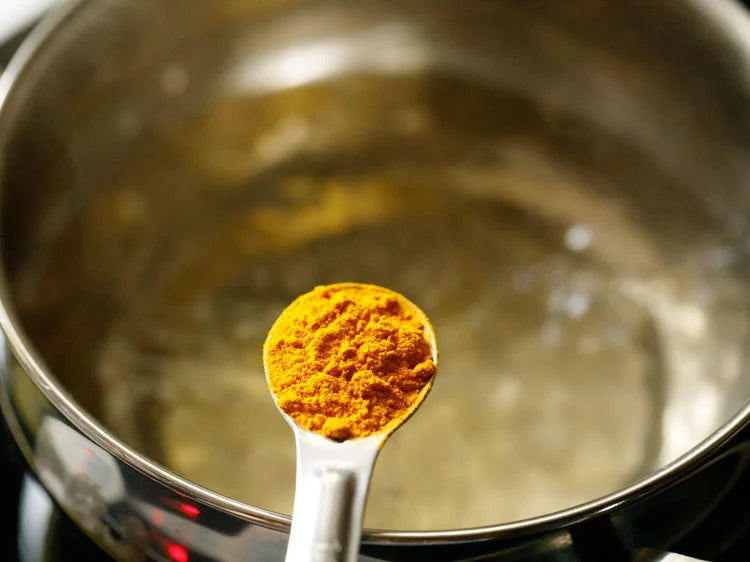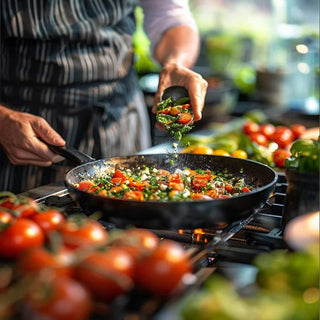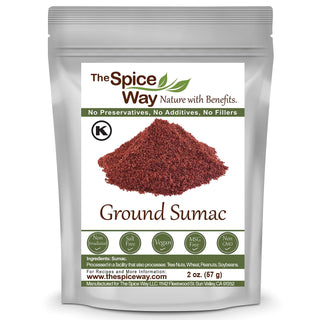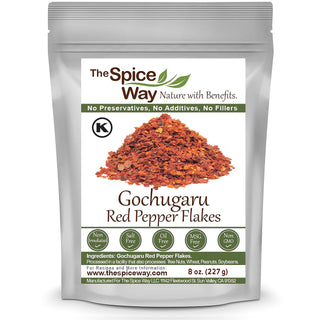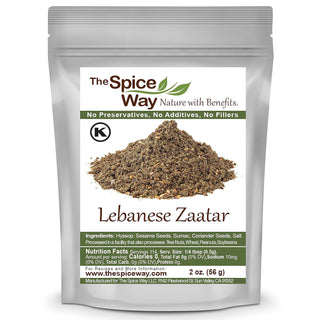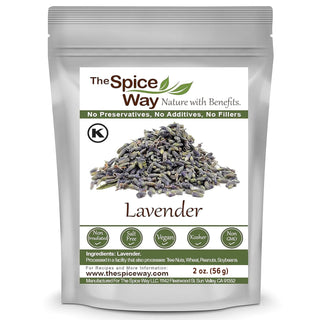Ever wondered why some dishes have that gorgeous golden glow? Turmeric powder is often the secret. This vibrant spice, made by drying and grinding the root of the Curcuma longa plant, has been part of cooking traditions for centuries. While it’s a cornerstone of South Asian cuisine, it’s now found in everything from hearty stews to artisan breads.
In this guide, you’ll learn exactly how to use turmeric powder in your cooking, how it affects flavor, and the best ways to pair it with other ingredients.
What Does Turmeric Powder Taste Like?
Turmeric powder has a warm, earthy, and slightly bitter flavor with subtle peppery notes. It’s not spicy like chili, but it adds depth and balance to savory dishes. Because of its concentrated taste, a little goes a long way.
Flavor profile highlights:
-
Earthy – comparable to dried mustard or ginger, but more mellow
-
Bitter-sweet edge – keeps rich dishes from tasting too heavy
-
Aromatic warmth – especially noticeable when gently heated in oil or ghee
How to Use Turmeric Powder in Cooking
The key to cooking with turmeric powder is knowing when and how to add it so its flavor and color shine without overpowering your dish.
1. Add It to Curries, Soups, and Stews
Turmeric is a classic base spice for many South Asian curries, lentil soups, and slow-cooked stews.
-
Method: Add ½–1 teaspoon during the sauté stage with onions, garlic, and ginger.
-
Why: Heating turmeric in oil helps release its aroma and distribute the color evenly.
-
Try in: Chickpea curry, lentil dal, spiced chicken stew.
2. Make Golden Rice
Turmeric rice is one of the easiest side dishes you can master.
-
Method: Stir ½–1 teaspoon turmeric powder into your cooking water or broth before adding rice.
-
Flavor pairing: Works beautifully with cumin seeds, bay leaf, or a cinnamon stick.
-
Serving ideas: As a base for grilled vegetables, seafood skewers, or lamb kebabs.
3. Mix Into Marinades and Rubs
A pinch of turmeric deepens the flavor of marinades for meat, poultry, fish, or tofu.
-
Method: Combine turmeric with olive oil, garlic, lemon juice, and spices like coriander and paprika.
-
Tip: Let proteins marinate for at least 1 hour for best flavor penetration.
-
Great for: Grilled chicken thighs, baked salmon, or roasted cauliflower steaks.
4. Use in Sauces and Dressings
Turmeric can add both color and warmth to dressings, dips, and sauces.
-
Simple vinaigrette: Olive oil + vinegar or lemon juice + ½ teaspoon turmeric + honey + mustard.
-
Yogurt dip: Greek yogurt + turmeric + cumin + salt + chopped cilantro.
-
Serving suggestion: Pair with roasted vegetables, grain bowls, or falafel wraps.
5. Enhance Roasted Vegetables
Roasting vegetables with turmeric brings out their sweetness while adding that signature golden hue.
-
Method: Toss chopped vegetables with olive oil, turmeric, salt, and pepper before roasting.
-
Vegetables that shine with turmeric: Carrots, sweet potatoes, cauliflower, zucchini.
6. Infuse Oils for Easy Drizzling
Turmeric-infused oil is a quick way to add flavor to a finished dish.
-
Method: Gently heat ½ cup olive oil with 1 teaspoon turmeric for 2–3 minutes (don’t boil).
-
Use on: Flatbreads, salads, popcorn, or grain bowls.
7. Add to Egg Dishes
Turmeric pairs well with eggs, giving them both a visual pop and subtle flavor.
-
Scrambled eggs: Whisk a pinch of turmeric into the eggs before cooking.
-
Frittata boost: Combine turmeric with sautéed onions, spinach, and feta before baking.
8. Bake with Turmeric
While not common in sweet baking, turmeric can be used in:
-
Spiced muffins with cinnamon and ginger
-
Shortbread cookies for color contrast
-
Savory breads like naan or focaccia
Tips for Getting the Best Flavor from Turmeric Powder
-
Cook briefly in fat first – sautéing in oil or ghee helps the flavor bloom.
-
Avoid burning – turmeric can turn bitter if cooked on high heat for too long.
-
Balance bitterness – pair with sweet spices (cinnamon, nutmeg) or aromatic herbs (cilantro, parsley).
-
Store properly – keep turmeric powder in an airtight container away from light and moisture to preserve color and flavor.
PAA-Style Quick Answers
What dishes go well with turmeric powder?
Turmeric works best in curries, rice dishes, roasted vegetables, marinades, soups, and egg recipes.
Can you add turmeric to baking?
Yes — turmeric can be used in breads, muffins, and cookies for color and a mild earthy note.
When should you add turmeric in cooking?
Add turmeric early in cooking, ideally when sautéing aromatics, so its flavor infuses evenly.
Sample Recipe: Turmeric-Spiced Roasted Cauliflower
Ingredients:
-
1 head cauliflower, cut into florets
-
2 tbsp olive oil
-
1 tsp turmeric powder
-
½ tsp ground cumin
-
Salt & pepper, to taste
Instructions:
-
Preheat oven to 400°F (200°C).
-
Toss cauliflower with olive oil, turmeric, cumin, salt, and pepper.
-
Spread evenly on a baking sheet.
-
Roast for 25–30 minutes, turning halfway, until golden and tender.
-
Serve warm with lemon wedges.
Bringing It All Together
Turmeric powder is more than just a splash of color — it’s a seasoning that can transform your cooking. Whether you’re stirring it into rice, whisking it into dressings, or roasting vegetables with it, turmeric’s earthy warmth can elevate everyday meals.
At The Spice Way, we source turmeric powder with care so you get bold flavor, rich color, and fresh aroma in every pinch. It’s a simple addition that makes a big difference — one teaspoon at a time
